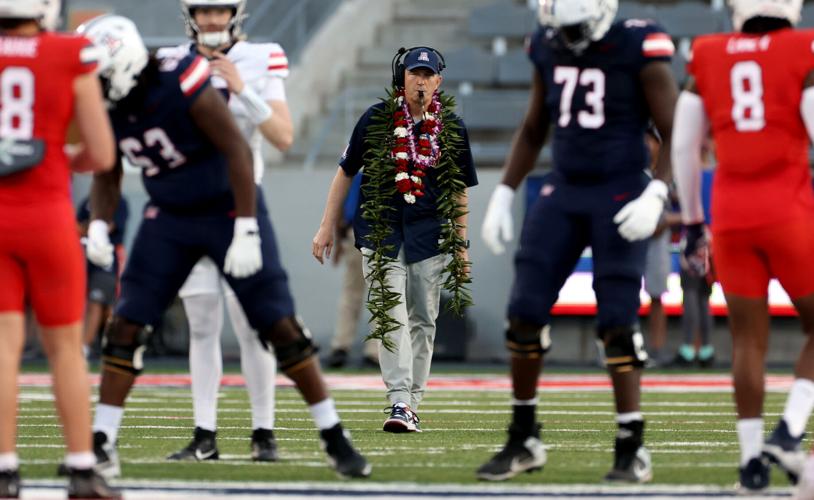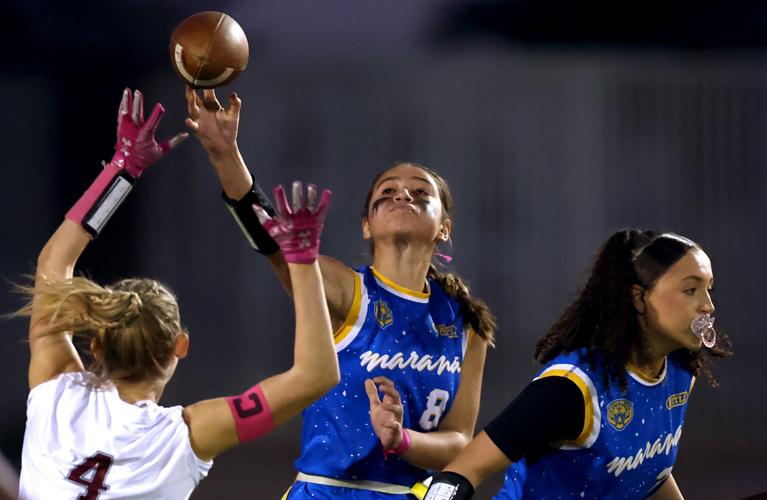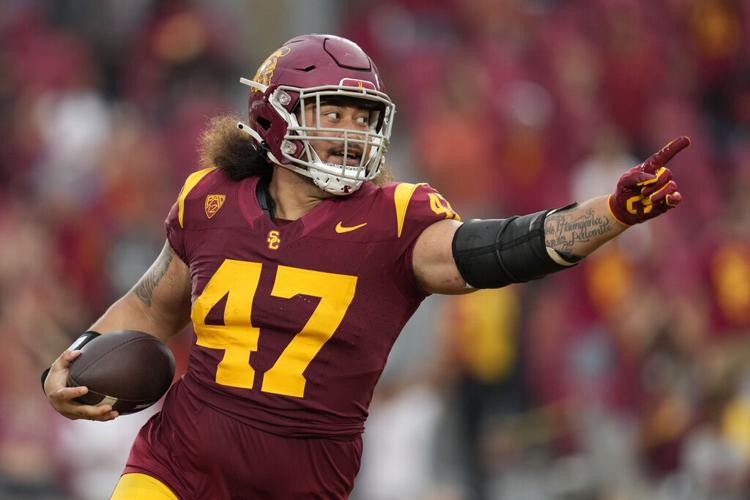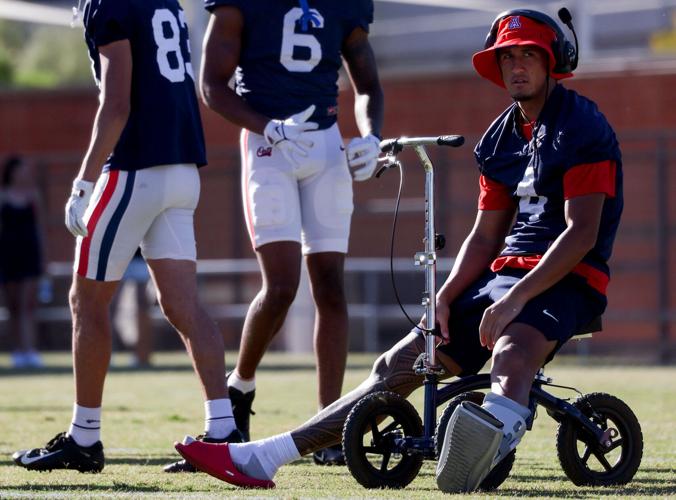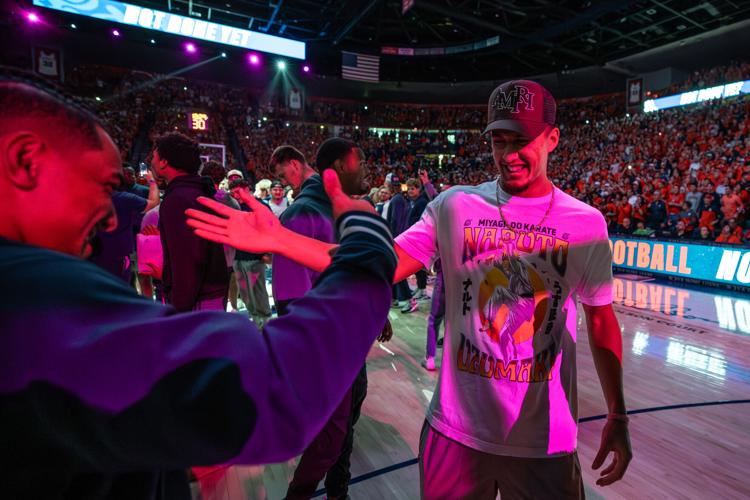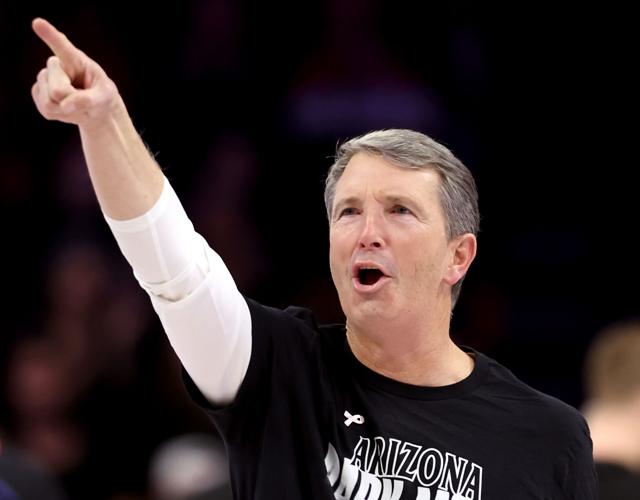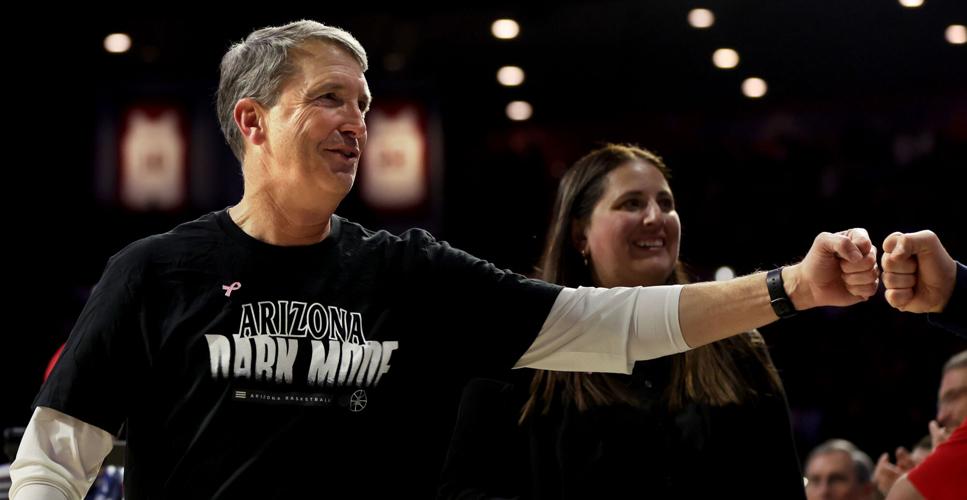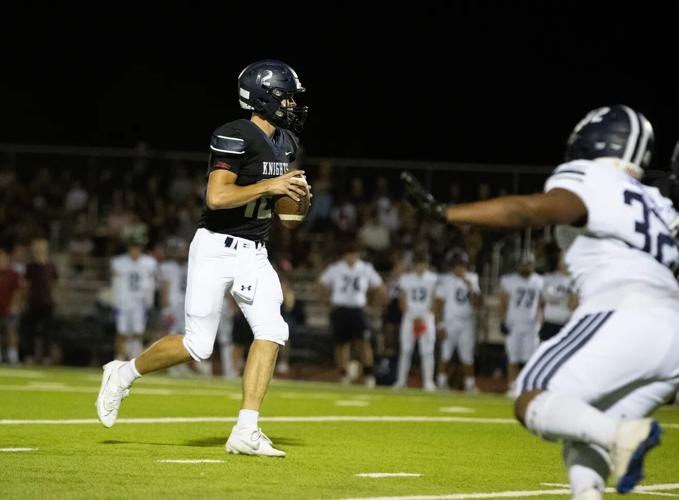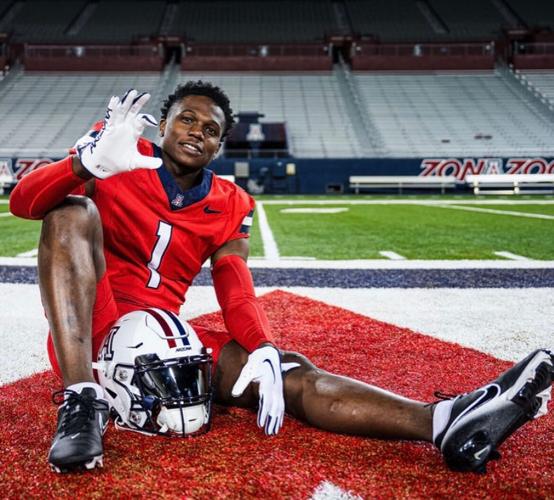One of Arizona football’s boosters wanted to meet with head coach Brent Brennan for dinner.
After all, it’s June, which is slow for a college football coach, right?
“He said, ‘When can we get together?’ I said,’Well...’” Brennan said.
Sure, the season is just over two months away and training camp doesn’t start until July 30, but Brennan and Arizona’s coaching staff have been busy this summer between recruiting and hosting the Brent Brennan Football Camps that wrap up this week.
In the last two weeks, Brennan held camp sessions, including the “Monday Night Lights” 7-on-7 tournaments and linemen challenges for high school teams, from May 31-June 4, then flew to Los Angeles on June 6 and returned to Tucson the following day. Brennan took his son, Scott, to camps at Arizona State and Northern Arizona last weekend, before attending the final Monday Night Lights event earlier this week.

New UA football coach Brent Brennan will have more resources at Arizona than San Jose State, but the pressure to win will also be greater.
It’s a grind, sure, “but it’s great for me, because I get to meet all of these high school coaches, meeting the players,” Brennan said.

Arizona football coach Brent Brennan watches his team line up for a play during the Wildcats’ 2024 spring game on April 27 at Arizona Stadium.
Added Brennan: “When we had our 7-on-7 event here, it was incredible, because I’m getting to to talk all of these coaches.”
Some of them go back more than 20 years with Brennan. Canyon del Oro head coach Scott McKee played linebacker for the Wildcats while Brennan was a graduate assistant coach under Dick Tomey in 2000. McKee, a first-year head coach of the defending Arizona Class 4A state champion CDO Dorados, participated in Monday Night Lights.
Having those tight-knit relationships with Arizona high school coaches has mostly been a vital part of Brennan’s recruiting going back to his days as a receivers coach at Oregon State. At OSU, “we recruited Arizona pretty hard, and we had great success here.” In the last seven seasons as San Jose State’s head coach, due to “budgetary stuff,” Brennan and the Spartans “were focused on the state of California.” Brennan is now swimming in the Power 4 water in Tucson.
Amid a busy summer for UA football, the Star caught up with Brennan at Lowell-Stevens Football Facility this week to talk about his football camps, recruiting strategy, transfer portal additions, the evolving landscape of college football and “red-line” mentality, among other pertinent topics.
How is camp season?
A: “I think they’ve been great. It’s been incredibly valuable for me, as a head coach, because it’s the only time of year I’ve been able to go out to other locations or evaluate players on this campus in a camp setting. It’s really valuable. It’s one of the rules that was changed about 15 or 20 years ago, where head coaches aren’t allowed to go out and evaluate in May, and because of that, it’s hard for a head coach to be out on the road recruiting even though a lot of us would like to. I’m sure there are some guys who wouldn’t, but I would like to.
“What happened to us at our last job is that you get to December and you have 15 days to sign a recruiting class, but you also have bowl practice or you’re preparing for a conference championship game. At San Jose, we would literally practice in the morning, jump on a plane, fly to L.A. and fly back that night. ... Practice (the next day), jump in a car and drive to Sacramento. That was what you had to do. If you have to sign a class of ‘25, you also have official visit weekends and practice, so you’re trying to see all of ‘25 in 15 days, which is, on some level, impossible, so that’s the only time head coaches are able to get out unless it’s a bye weekend.
“When camp season happens, I can go to L.A. or Dallas or they can come here to Tucson. Camps are great. I love camp season even though it’s hectic.”

Mountain Ridge's Ellie Cardiff (4) comes with the pressure but Marana's Roxi Singer gets the pass off in the first quarter of their second round game of state girls flag football playoffs at Marana High School on Oct. 26, 2023.
There’s a girls flag football component to your camp season. Last year was the first season of AIA-sanctioned girls flag in the state of Arizona, and it will be added to the 2028 Summer Olympics. What have you seen regarding the game growing for young girls and women?
A: “I think it’s awesome. It’s one of those sports where there weren’t many women that played the game. There’s multiple companies running it in California and other parts of the country, it’s ‘Next Level Flag Football,’ and they have this incredible business model with flag football and it’s done a ton for interest of the game, and it’s also a safe and healthy to get people introduced to the game without running into people full-speed at a young age, so there’s a ton of interest in it.
“For a lot of female athletes in California, they played Next Level football growing up, because it’s co-ed, then they get to high school and there’s no chance for them to play.
“They love the game, and football is the most popular sport in America, so being able to serve that other half of our population and giving them a chance to play the incredible game of football, I think, is awesome.”

Gilbert Higley quarterback and Arizona commit Luke Haugo looks for an opening during an October 2023 game at Higley High School.
Excluding the transfer portal, when you’re assembling your future recruiting classes, are there regional hotspots you want to focus on or how do you strategize where Arizona lands players?
A: “Primarily, we always want to do a great job in the state of Arizona. That always has to be number one. Our number one focus is that. Then we’re going to states where we have relationships and history, like the state of California, or a new footprint where some of our coaches have history, like the state of Texas, where there’s a high population and high number of Division I football players every year.
“We gotta go where the players are, right? And hopefully give those players a chance to come to you. We’re not going to recruit every state in the country, but being able to go to Dallas to work a camp, or Houston to work a camp, is great because a lot of those people don’t know me. They might know our assistant coaches, because they’ve been out working the entire month of May, so it gives them a chance to know me and go, ‘Oh, yeah, that guy is a good guy. I can see my guys playing for him.’”

Southern California defensive lineman Stanley Ta’ufo’ou runs to the end zone for a touchdown after recovering a fumble by Nevada during the second half the Trojans’ 66-14 win in Los Angeles on Sept. 2, 2023.
You recently lauded Arizona for signing several running backs, wide receivers and linemen in the transfer portal. What do you like most about the added depth at those positions?
A: “As we looked at it, we decided we needed to add some other people in there and get in the mix, play and impact the game, or maybe even some guys that are right on the edge and impact the practice environment and have a chance to break in the lineup depending on how they play.
“Recruiting evaluation is always an educated guess. Same thing in the NFL: how many times have people said, ‘This is a sure-fire first-round draft pick,’ and then he’s not good in the NFL. It’s our best evaluation, it’s our best decision-making, it’s our best process to make a decision to bring a transfer portal player in here or a high school player in here, but there’s not guarantee they’re going to be good when they get here.”

Former New Mexico star running back Jacory Croskey-Merritt was one of seven recruits to sign with Arizona’s 2024 recruiting class during National Signing Day. That No.1 Croskey-Merritt wore that day will be his new number as a Wildcat in 2024, too.
Former New Mexico star running back Jacory Croskey-Merritt flip-flopped between Arizona and Ole Miss, but is now joining your backfield. From your perspective, how would you describe the process getting him to the UA?
A: “I think it was awesome, because it had a good ending for the Wildcats. He’s a great kid. He had a really good season at New Mexico, and we played against him. So when this happened, it was a battle. Initially, he was really excited about coming and we were talking to him all the time, but then he had this big gap where he had to finish school and get here and all of that stuff, but then other people kept recruiting him.
“That’s happening, and there’s no way to stop that from happening, and that’s just the nature of our business right now. Then all of a sudden, he was like, ‘Well, maybe I’ll go talk to them,’ so at the end of the day, he chose Arizona, and that’s all I care about.
“He’s a great kid and he’s going to be a great player for us, and we’ve added some other great pieces to our running back room that’s really going to make that position a strength for us, which is exciting. I thought (Rayshon “Speedy” Luke) had a great spring for us. There’s a lot of pieces that are going to be fun.”
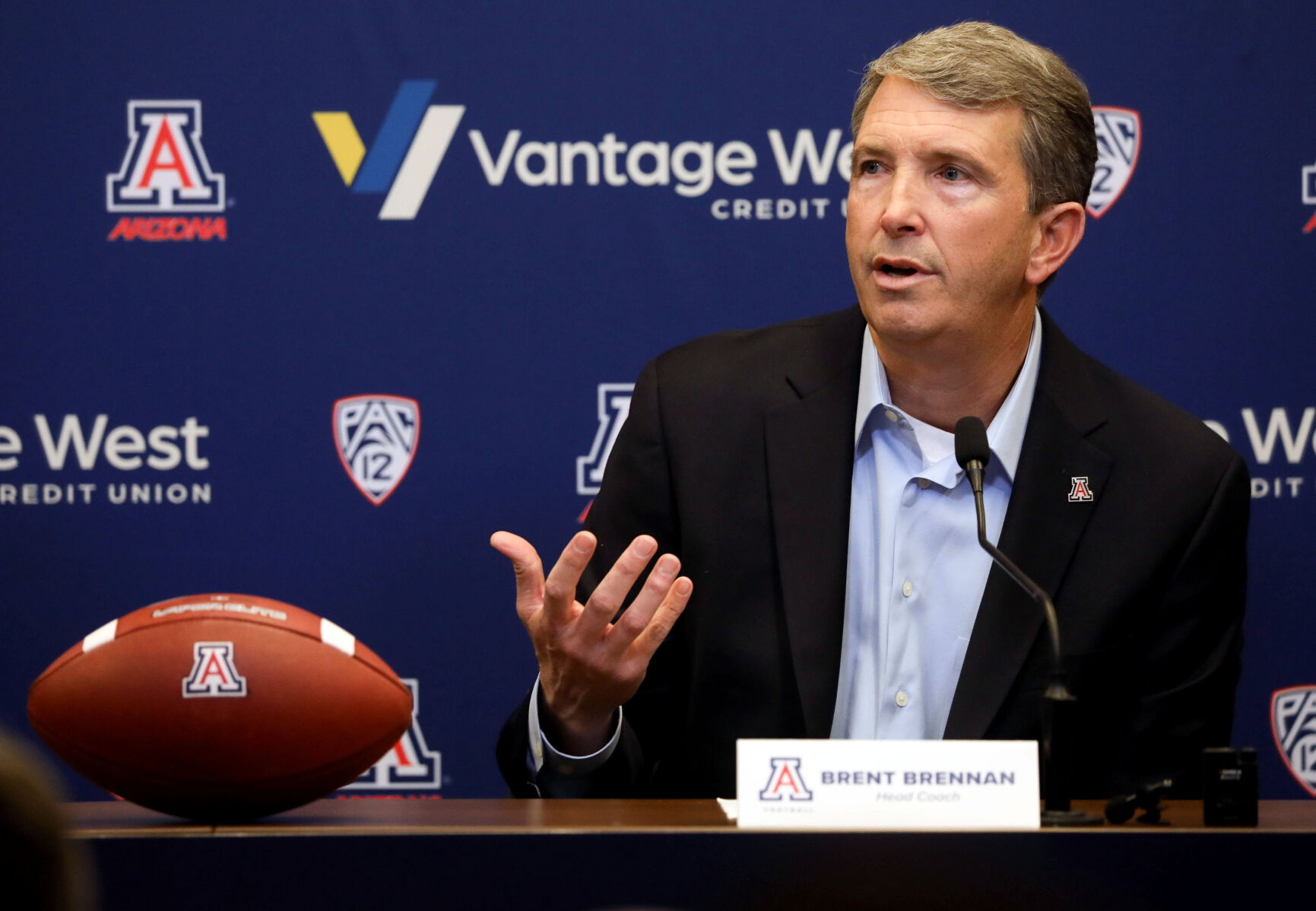
New University of Arizona head football coach Brent Brennan addresses the media during his introductory press conference in late January.
Between programs having NIL backing that others can’t compete with, corporate logos being added to the field, along with the Big 12 exploring a title sponsor for the conference, how do you feel about the direction of college football and what the ever-changing landscape means for Arizona?
A: “I think everyone is doing the best they can. Everyone is trying to find the best way forward. The purists will complain or whatever, but I’m just not into complaining. I don’t have time for it. And really, who wants to hear someone complain about the struggles of college football, like, what are we talking about?
“It’s the second-most popular sport in America besides the NFL. The numbers will tell you that. We’re finding the best way forward. The game isn’t changing. At the end of the day, the young men at the University of Arizona are going to have a great experience, play high-level football, get their education, go to the NFL, benefit off their name, image and likeness, and have a staff develop them as men just as much as players.
“That’s how I look at it: how do we move forward? Yeah, there’s logos and NIL and this kid is getting that or, ‘We can’t get this kid, because this other school is paying him that.’ Like, who cares?
“At the end of the day, we still have to build a culture and a team that is connected and can play good football together. I’m not going to worry about the stuff I can’t control, and that’s a big message to my football team, too. We can’t control what the other team does or if it’s too hot, rainy, snowy, so let’s focus on us. What is in our control?
“Let’s get back to what we can control and we can dive into our process and control the timing of what we put into the offseason. That’s always been a big thing with our football team.”

Arizona wide receiver Tetairoa McMillan wears a boot on his left leg while watching the Wildcats during spring football practice in late April.
Arizona star receiver Tetairoa McMillan “had a little procedure” on his leg and missed the final week of spring practices. How is he progressing?
A: “Great. He’s moving along and progressing great.”
With a nucleus of returning starters, including McMillan, one of the favorites to win the Biletnikoff Award this season, and quarterback Noah Fifita, among others, along with added players in the transfer portal, how do you feel about the team entering the 2024 season?
A: “I give a lot of credit to Coach (Jedd) Fisch and that staff, because they recruited high-quality players who are outstanding young men. That was a cool thing, when those players decided to stay here because of how connected they are and how much they love the University of Arizona. That was hard, because they were getting offered more money, more opportunity or the grass is always greener (on the other side). There was a lot coming at them.
“There’s also a challenging component, because I made the same decision Coach Fisch made, to leave one program and go to another. Coming into this situation, I had empathy for what they were going through, because I was feeling it, too, from the players I had just left at San Jose. I love those kids, I love that place.
“Coming into this job at Arizona, I had an understanding of that, so I wanted to respect the players and the culture they had built, but also give them a chance to get to know our coaching staff and get to know our style and how we’re going to approach things and go about it.”

Arizona football standouts Tetairoa McMillan, right, and Noah Fifita, left, slap hands as dozens of Wildcat players flood the McKale Center court during a stoppage of play in the UA men's basketball team's matchup with UCLA back in January at McKale Center. The impetus for McMillan, Fifita and others to take the floor: to share the news that even amid a whirlwind coaching upheaval for the Wildcats this past week, they're sticking around Tucson to play for new UA coach Brent Brennan in 2024.
How has it been trying to marry your culture with the player-led culture already established here?
A: “The best teams I’ve ever been a part of have been player-led. Not knowing that was in place here, that was the first thing I said to the players in the first meeting. You want to go fast? Go alone.
“You want to go far? Go together, and there’s nothing more important than being together on this journey.
“That’s always been a big component on every football team I’ve been a part of. Because that’s already in place here and it’s aligned with how I see the best football teams, it was a nice fit.”
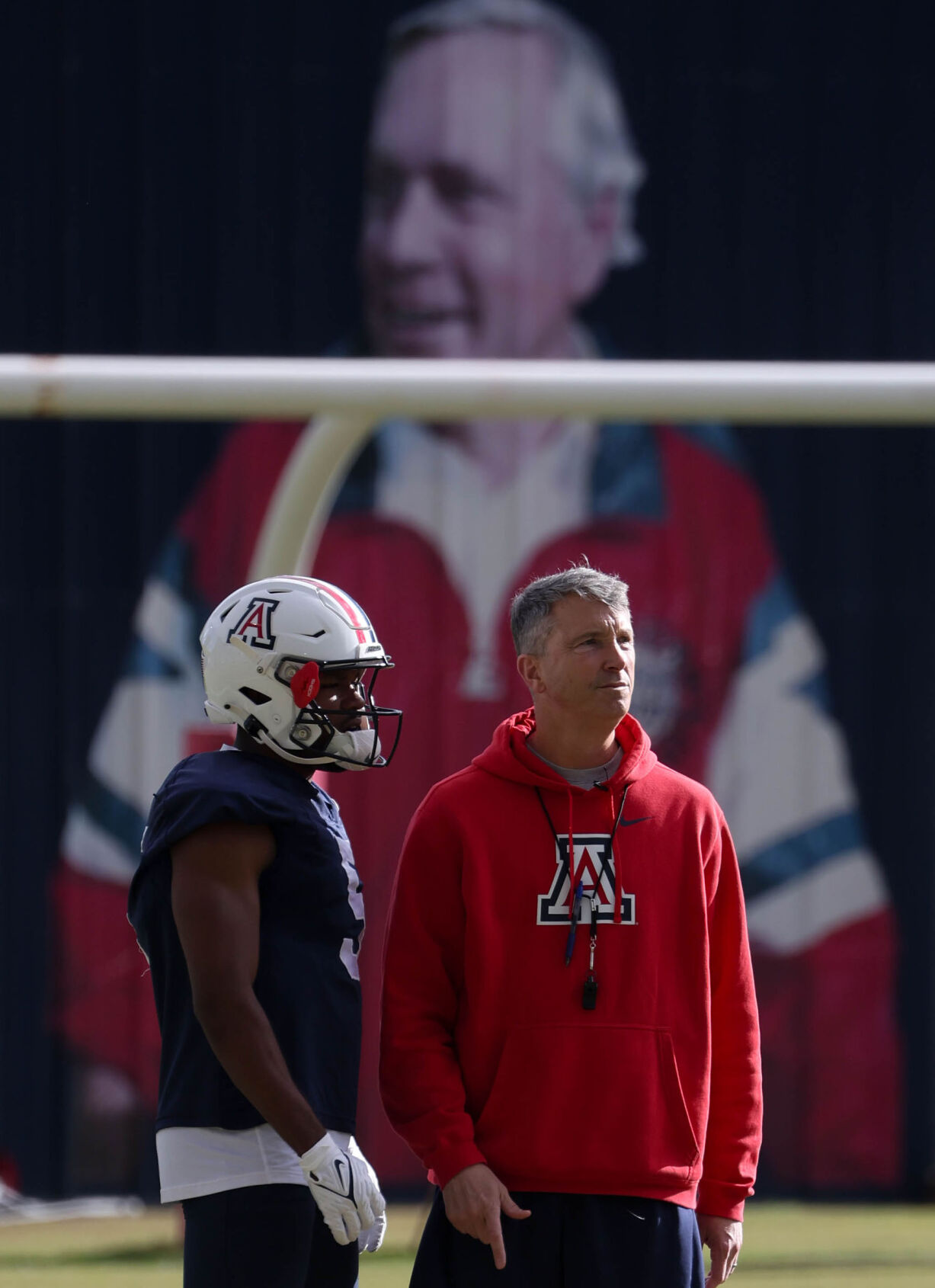
Arizona football coach Brent Brennan, right, chats with wide receiver Montana Lemonious-Craig during the Wildcats' first official spring practice on March 26 at the Dick Tomey Practice Fields on the UA campus.
You’ve used the expression ‘red-line mentality’ when talking to the players. Is that a self-created mantra or is that a Tomey-ism?
A: “In some ways, it has a lot to do with Coach Tomey, because Coach Tomey was such a fanatic about effort. That was something we changed when came from San Jose to here — and how could we apply it to the U of A? We’re trying to define effort and what’s important to us in simple terms the players understand and can say.
“When I say, ‘Is that red line?’ they know exactly what I mean and if it’s not red line. We presented that to the team before spring practice and they were great with it, and it’s an easy thing to understand and see. They know what accountability is, they know what effort is, they know what execution is, and those things are simple.
“This is what we are and this is what it looks like.”
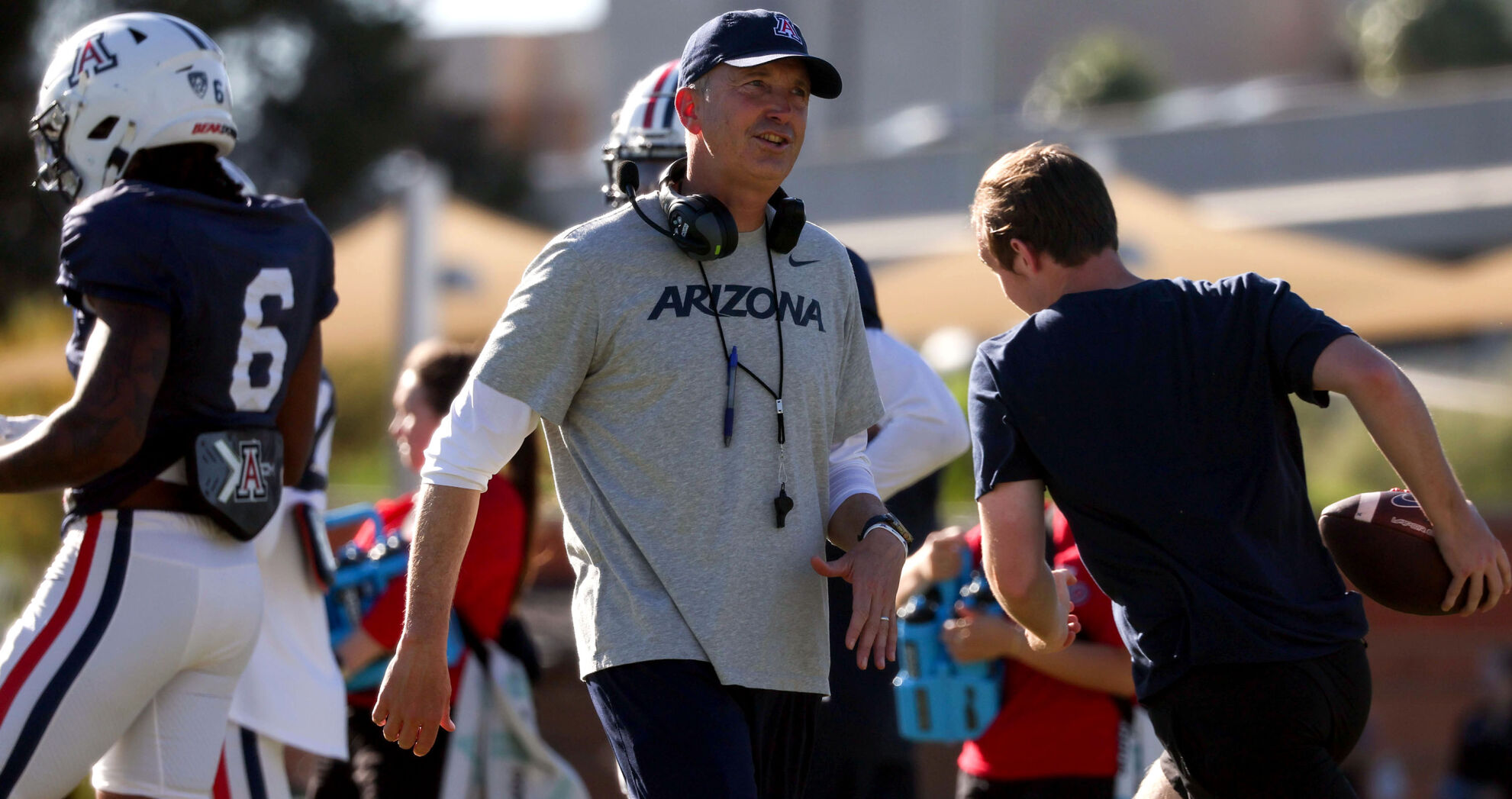
Arizona head football Coach Brent Brennan talks to players during spring football practice, Tomey Field, on April 23.
How would you summarize the first half of your first year on the job?
A: “Busy — fantastically busy — but I’m having so much fun. I love being around this team and being around our staff. I feel great about the men and women who chose to be a part of this program with us, and I think people feel that when they come here. I want every person who is around our program and team to feel good about that encounter.
‘Those guys are good people,’ or, ‘I really liked her, she did a great job.’ That’s important to me. If it feels good, players are going to want to be around here.

New Arizona football coach Brent Brennan gives some fist bumps after being introduced to the crowd at McKale Center during a stoppage of play in the Wildcats’ win over USC on Jan. 17 — the day he was officially introduced as the UA’s new head coach.
“They’re going to want to come in and say, ‘Hey, Coach! I want to watch that 7-on-7 play from today.’ ‘Sure!.’ The more connected we are, the more committed we become. How do you build connection? You build it face-to-face, side-by-side. You don’t build it over the phone or over text messages.
“There’s been a lot of stuff in between there, like an administrative change, NIL and recruiting battles, spring practice and we’ve had all of it, but at the end of the day, it’s still football. Whenever I walk out there on the grass, I just smile. It’s still just this amazing, beautiful game of football.
“Players are the ones who do all the work and make the plays, so it’s always about them. We’re having fun. It’s been awesome.”
After the Arizona football team's spring game on Saturday, April 27, 2024, UA coach Brent Brennan said he’s “been really impressed with where our defense is at,” and noted “it’s important to essentially throw punches” in practice. Added Brennan: “If it’s really lopsided, you’re gonna have a problem in the fall. … I’m so impressed with a lot of players on our defense.” (Justin Spears/Arizona Daily Star)


